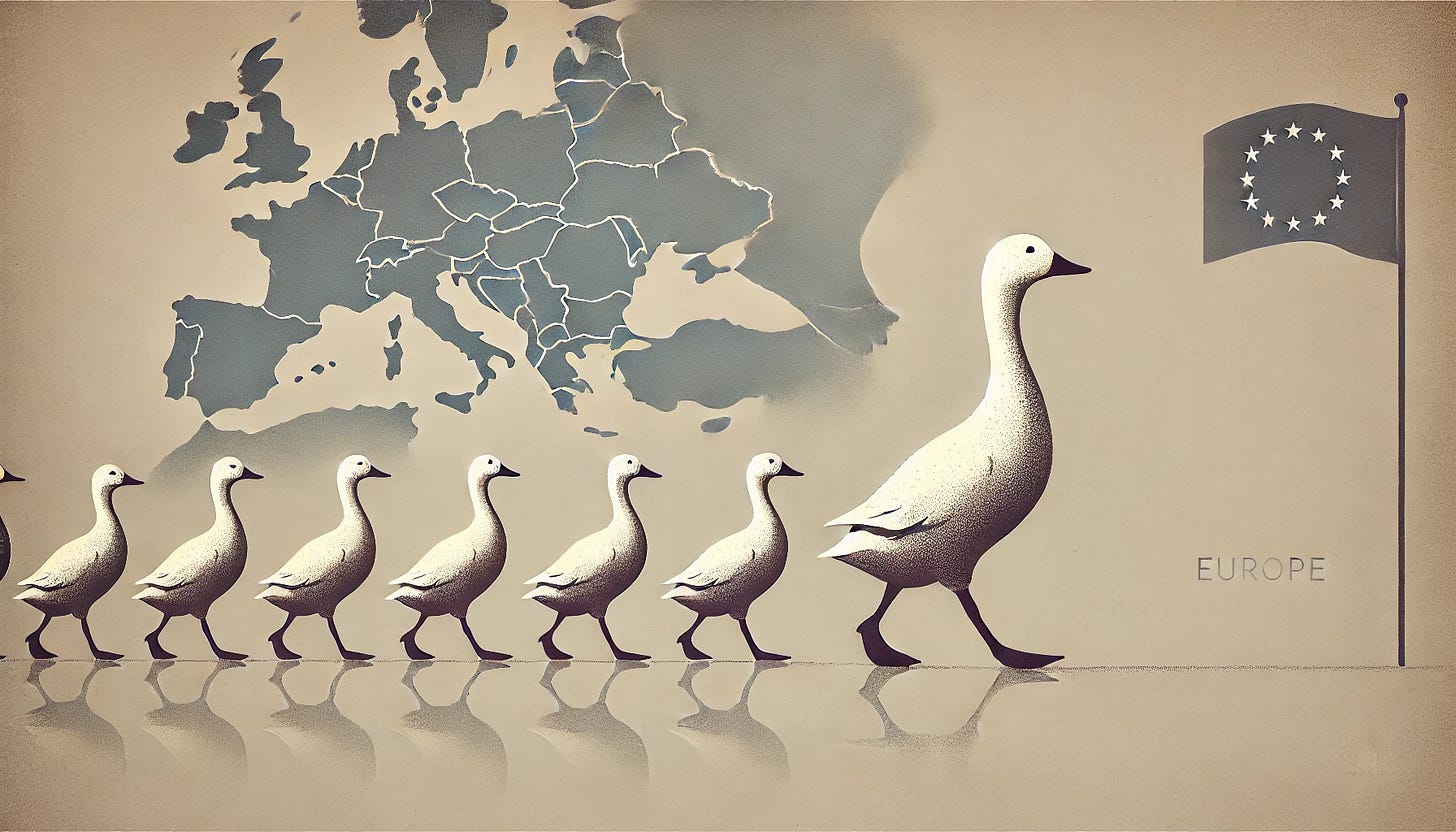Why Europe Needs to Get Its Ducks in a Row—And Fast
Why Europe Needs to Get Its Ducks in a Row—And Fast
Picture this: 27 countries, one colossal market of nearly 450 million people, and a potential GDP gain of up to 12% by the end of the decade—if only the EU can figure out how to fully integrate. That’s the Single Market dream in a nutshell. But the clock is ticking, and if Europe doesn’t get its act together, it risks losing global influence faster than you can say tariff rate quota.
Europe’s Global Status Is Slipping
For starters, Europe’s share of global GDP is sliding. In 2004, it was around 25%; today, it’s roughly 17.8% (IMF, 2023). Meanwhile, heavyweights like the United States and China continue to ramp up innovation, secure supply chains, and wield outsize influence in setting world standards—from carbon emissions to digital privacy. If Europe wants to avoid becoming a mere observer in these big conversations, it needs to harness its collective economic might.
That’s where deepening the Single Market comes in. Instead of functioning as a collection of smaller, quasi-unified markets, the EU can (and should) act like one seamless economy. This is crucial for everything from negotiating trade deals to funding critical R&D in areas such as AI, green tech, and biotech.
Why a Deeper Internal Market Matters
1. Sheer Scale = Competitive Edge
Being able to serve customers in Dublin, Budapest, and Athens under the same regulatory umbrella can slash costs and boost efficiency. That’s no small feat when you factor in around 450 million consumers (Eurostat, 2022). This scale can make EU-based companies more competitive globally—and more attractive to foreign investors.
2. GDP Growth Potential
The European Commission (2020) suggests that knocking down what’s left of internal barriers could add up to 12% to the EU’s collective GDP by 2030. That translates into new jobs, higher wages, and more robust public budgets. It’s not just a figure on a spreadsheet; it’s tangible improvements in the everyday lives of EU citizens.
3. Global Negotiation Leverage
Remember GDPR? The EU set a global precedent for data privacy precisely because it acted as a single bloc. When 27 member states speak with one voice, the rest of the world tunes in. A more cohesive single market would amplify that voice, whether in negotiating trade deals or regulating emerging tech.
4. Innovation and Investment Magnet
An IMF working paper (2021) estimated that foreign direct investment (FDI) into the EU could jump by 10-15% if the region simplified its remaining regulatory patchwork. More FDI often translates into more R&D money, collaborative tech hubs, and stronger incentives for homegrown innovation. That’s a virtuous cycle Europe can’t afford to ignore.
The Big Hurdles: Getting All Those Ducks in Line
1. Regulatory Fragmentation
Sure, the Single Market exists on paper, but in practice, every member state still has quirks—local licensing rules, slightly different product standards, and tax discrepancies. The result? Businesses that want to “go European” quickly discover it’s not as seamless as they hoped.
2. Languages and Cultural Diversity
The EU’s diversity is a strength—until you’re a small company trying to launch simultaneously in 27 countries, each with its own consumer habits, legal interpretations, and cultural sensitivities. That complexity can slow expansion and limit the full benefits of a unified market.
3. Politics of National Interests
Domestic champions and cherished industries often find ways to gain extra protection from EU-wide reforms. This tension between broader integration and local interests is as old as the Union itself. But the stakes are higher now: the more the EU squabbles internally, the more it cedes ground globally.
Why the Rush?
In a word: competition. A big shift is underway in global supply chains, trade alliances, and tech dominance. As countries (and blocs) scramble to secure their spot in the next decade’s economic order, Europe risks being overshadowed if it doesn’t consolidate its internal strength. The best way to do that? Become the cohesive, frictionless market it claims to be—unleashing the full potential of its size, skills, and resources.
Pulling It All Together
The EU’s Single Market isn’t just a technical framework; it’s the most powerful lever Europe has to stay relevant on the world stage. By streamlining regulations, fostering cross-border cooperation, and embracing the advantages of scale, the EU could unlock billions in growth and solidify its status as a key player in setting global rules—rather than merely following them.
But the window of opportunity isn’t guaranteed to stay open. In a fast-moving international landscape, Europe needs to move, well, fast. If it doesn’t get its ducks in a row soon, it risks fading from the spotlight, watching other global powers shape the future without its full involvement. That’s a scenario no one in the EU wants to see.
References & Figures
• IMF. (2021, 2023). World Economic Outlook (various issues).
• European Commission. (2020). Single Market Progress Report.
• Eurostat. (2022). Population Data by EU Member States.
• OECD. (2022). Main Science and Technology Indicators.
(All data and estimates are approximate and provided for illustrative purposes.)


